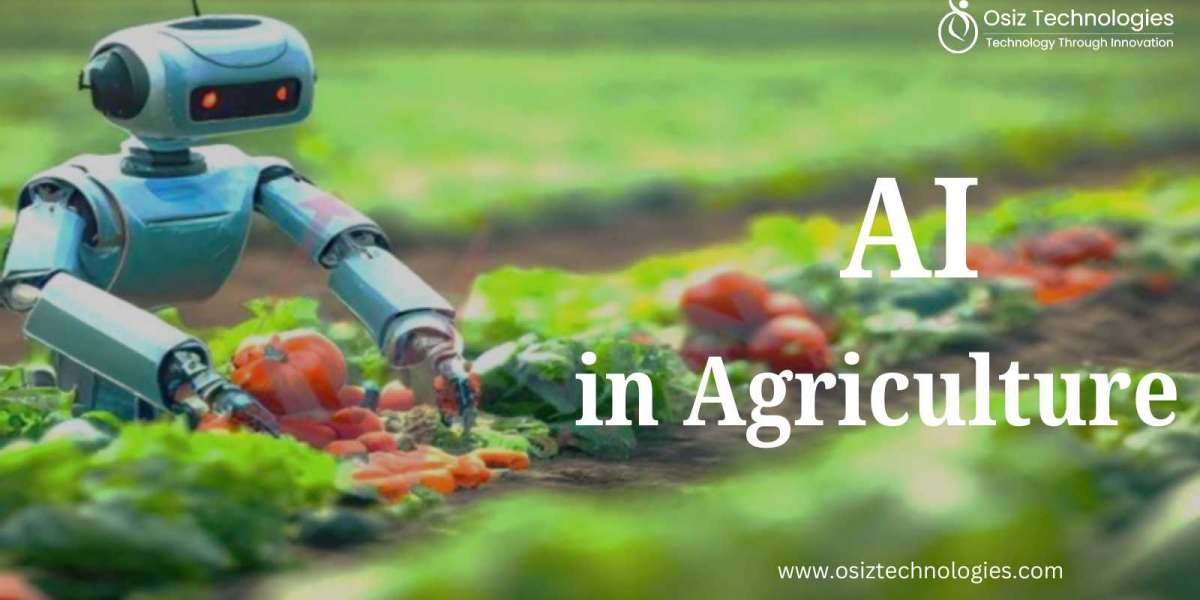The need for food is rising along with the global population. Farmers are facing increasing pressure to produce more with fewer resources, all while contending with climate change, labor shortages, and evolving consumer preferences. Enter AI in Agriculture, a transformative technology poised to revolutionize farming practices and ensure global food security. This blog explores how AI for Agriculture is reshaping the industry and what the future holds.
Precision Farming: Maximizing Yields, Minimizing Waste
One of the most impactful applications of Artificial Intelligence for Agriculture lies in precision farming. AI-powered tools enable farmers to gather and analyze vast amounts of data, including weather patterns, soil conditions, crop health, and market prices. This data is then used to optimize various aspects of farming, such as:
- Predictive Analytics: AI algorithms can predict crop yields, pest infestations, and disease outbreaks, allowing farmers to take proactive measures and minimize losses.
- Variable Rate Application: Instead of applying fertilizers and pesticides uniformly across a field, AI can determine the precise amount needed for each specific area, reducing waste and environmental impact.
- Automated Irrigation: AI-driven irrigation systems can optimize water usage based on real-time conditions, conserving this precious resource.
Robotics and Automation: Addressing Labor Shortages
Agriculture is often labor-intensive, and many farms struggle to find enough workers. AI in Agriculture is helping to address this challenge through the development of robotic solutions. These robots are capable of many different tasks, such as:
- Automated Harvesting: Robots can harvest crops more efficiently and accurately than humans, reducing labor costs and minimizing damage to produce.
- Weed Control: AI-powered robots can identify and remove weeds with precision, reducing the need for herbicides.
- Planting and Transplanting: Robots can automate the planting and transplanting process, ensuring consistent spacing and depth.
Crop Monitoring and Disease Detection: Early Intervention for Healthier Crops
Early detection of crop diseases and pests is crucial for preventing widespread damage. AI for Agriculture is revolutionizing crop monitoring through:
- Drone-Based Imaging: Drones equipped with cameras and AI algorithms can capture high-resolution images of fields, identifying areas with stressed or diseased plants.
- Computer Vision: AI-powered computer vision systems can analyze images from satellites, drones, and even smartphones to detect subtle changes in plant health that might be invisible to the naked eye.
- Early Warning Systems: AI can integrate data from various sources to provide farmers with early warnings of potential problems, allowing for timely intervention.
Livestock Management: Optimizing Animal Health and Productivity
Artificial Intelligence for Agriculture is also transforming livestock management by:
- Precision Feeding: AI can analyze data on individual animals to determine their specific nutritional needs, optimizing feed intake and reducing waste.
- Health Monitoring: AI-powered sensors can monitor animal behavior and vital signs, detecting early signs of illness and allowing for prompt treatment.
- Automated Milking: Robotic milking systems can automate the milking process, reducing labor costs and improving efficiency.
Challenges and Opportunities:
While the potential of AI in Agriculture is immense, there are also challenges to overcome. These include:
- Data Availability and Accessibility: AI algorithms require large amounts of data to train effectively, and this data may not be readily available for all farmers.
- Cost of Technology: Implementing AI-based solutions can be expensive, particularly for small-scale farmers.
- Digital Literacy: Farmers need to be trained on how to use and interpret the data generated by AI systems.
Despite these challenges, the future of AI for Agriculture is bright. As technology continues to advance and costs decrease, AI will become increasingly accessible to farmers around the world. By embracing AI in Agriculture, we can create a more sustainable and efficient food system that can feed a growing population while protecting our planet. The convergence of data science, robotics, and agricultural expertise promises a future where technology empowers farmers to make informed decisions, optimize their operations, and ensure a secure and abundant food supply for generations to come.







